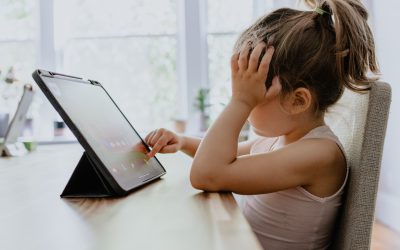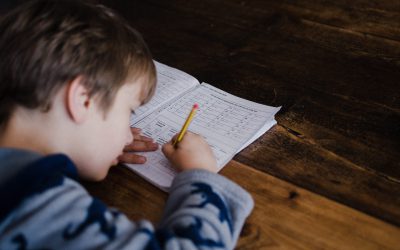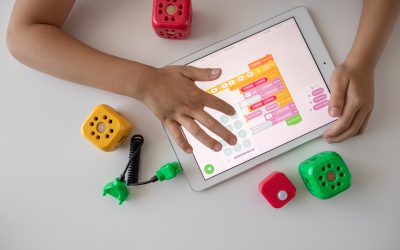Teaching at the kitchen table; a quick guide to home-schooling for parents
10 Apr 2020 | Parents
Since Monday 16 March, all schools in the Netherlands have been closed due to the corona crisis. This means that, in addition to their regular activities and work, many parents now also have to home-school their child. Many parents are overwhelmed by these new responsibilities and are trying to make sense of what the school is asking them to do. This blog discusses the most frequently asked questions from parents about home education. This can help parents make choices about how best to support their child, and hopefully this blog will also ease some anxiety among parents about their child’s development.
Marlieke Mols
08-04-2020

My child’s teacher has prepared all kinds of work. What has priority?
On the Facebook page “Bovenbouwwereld”, aimed at teachers of primary years 5 to 8, dozens of teaching ideas for home are shared, my mailbox is flooded with newsletters from cultural organisations that want to support homeschooling and public broadcasters like the NPO and BBC are also making educational youth programmes. There are so many good and fun initiatives that it is difficult for teachers to choose what to offer.
The compulsory subjects in primary school are: Dutch, English, arithmetic and mathematics, social sciences (history, geography, biology, traffic lessons), arts (music, drawing and crafts) and physical education. Some schools currently choose to only offer language and maths. Other schools choose to include the subjects artistic orientation and physical education in the home education programme. To determine what needs to be offered (in abbreviated format) to the children, teachers use the core goals as set by the SLO foundation. This knowledge centre develops the curriculum in primary, special needs and secondary education in the Netherlands. The SLO’s core objectives are quite broad: this gives schools freedom in how they want to achieve these core objectives. SLO has prepared Intermediate Targets & Learning Tracks (TULE) to structure and sequence the content of the various subjects over the school year. To understand which objectives and subject content needs to be prioritized, you can have a look at tule.slo.nl
As a parent, you can expect every teacher to think carefully about the assignments he or she prepares for the pupils. Nevertheless, it is currently difficult for teachers to estimate how long pupils will need to complete the assignments in their home environment. So also rely on your own instinct as a parent, and if you are really unsure, you can always contact your child’s teacher.
What is the best way to teach my child new material?
Many schools will provide instructions for your child via digital media (e.g. video or online tutorials). If this is not the case at your child’s school, you can give your child the instructions they need yourself. Of course, you can also use these tips if your child needs extra help.
Good instruction consists of:
- Setting clear goals for the lesson;
- Giving clear explanations;
- Activating the child;
- Giving feedback.
In order to remember new learning material, it is important that your child knows what he or she is going to learn. Clear learning goals help them with this. This allows children to differentiate between main concepts and minor details. Make sure to offer a maximum of one or two learning goals per instruction. When you offer too many goals at once, children will have a hard time understanding what they are working towards. In addition, children will be able to remember the material better if they can link new material to existing material. It is therefore good to understand what your child has already learned and try to reference to prior knowledge. Finally, it helps if you build up the lesson in steps: this way, children will know what steps they will need to take to achieve the learning objective.
Sequencing of content
If you provide an explanation, it is useful if you have understand how each subject is structured in terms of content and profession of skills. The website slo.tule.nl explains the Dutch curriculum and what your child should have covered in each year of school. This will prevent you from going too far with your explanation. For example, only in the upper years do children learn to calculate using “formal” symbols such as X and Y.
Appealing to interests and high expectations
Pupils are best at remembering new material when they are interested and when you have high expectations of what they can achieve and express confidence in their ability to achieve these. As a parent, therefore, try to connect with the experiences of your child. In addition, various studies show that children are most involved when they are actively engaged in the learning. Does your child love pizza? Teach fractions by letting them be the pizza baker and think about the number of slices each family member will get.
Effective feedback
Studies by Hattie show that feedback is most effective if your child can answer three questions based on your feedback:
- Where am I going? (Feed up);
- How am I doing so far? (Feedback);
- What are the next steps? (Feed forward).
Do not try to give feedback only on the end result, but together with your child look at the process he or she has gone through to get to the end result. This process will give you and your child insight into your child’s progress.
The children have a daily schedule at school. Do you have to do that at home too?
Structure refers to the degree to which children are offered guidance, so that they know what is expected of them. A good daily routine supports development, learning and play of children. I therefore recommend that you use some form of daily schedule. Which form works for you and your family is up to you.
A good daily schedule will be appropriate for the age of the child: you can really expect senior pupils to work two hours a day on school tasks, continuously or with a break. An hour and a half is reasonable for a pupil in the middle years. In addition, a good daily schedule will consist of recurring tasks: for example breakfast, arithmetic, (outdoor) play, lunch, language education and arts. Furthermore, make sure that the time available is generous: many pupils become stressed if they notice that they are unable to complete the tasks. In this hectic time, it is important that the daily schedule offers a good balance between rest and activities, structure and flexibility.
I cannot always help my child. But how can I help my child to “learn to learn”?
Not only is the active knowledge of your child important, but the “agile knowledge” is important too. This means that children can also apply knowledge and skills outside a school setting, for example, finding answers to questions they have themselves. In order to master these strategies, it is important that children articulate their thinking out loud and that they apply what they have learned in new contexts. Try to encourage this as a parent.
My own work and the health of my family stress me out. How do I ensure that I keep a positive atmosphere at home?
A precondition for good education is a safe and supportive learning climate. Children who feel unsafe, cannot achieve good learning performance. However, so much is now expected of you as a parent that any stress you may have will be felt by your children.
It is now more important than ever that you also take good care of yourself: seek support and relaxation if you need it. If you notice that tensions are running too high at home, the children can be taken care of by the school. This gives you, as a parent, the peace of mind to put things in order. Discuss the options with your child’s school. The website of the Netherlands Youth Institute contains all kinds of tips for parents to deal with any tensions there may be at home (www.NJI.nl).
Finally: on 4 April, associate professor Bertram-Troost wrote in the Friesch Dagblad newspaper, complimenting school leaders, teachers and parents who had managed to set up distance learning facilities in such a short time. However, she also wondered whether these quick actions did not mean that the pedagogical dimension of education had not been pushed to the background. Many children benefit from continuity, while many other children need time to reflect on major events. Bertram-Troost calls on teachers and parents in the coming weeks to have the courage to break through structures and to focus on the emotions and thoughts of children.
If you have any questions or comments on this blog, please feel free to contact me at mmols@rosaboekdrukker.nl
And more guidelines for parents are here: https://www.hetabc.nl/tips-van-het-abc-tijdens-thuisonderwijs/
References
Bertram-Troost, G. (2020). Nú is er kans voor meer bezieling in het onderwijs. Friesch
Dagblad van 04-04-2020.
Drewes, T. & Dael, H. van, (2013). Goed Onderwijs. Praktijkboek Basisonderwijs
Amsterdam.
Keulen, A. van, (2014). Pedagogisch kader: voor professionele netwerken onderwijs en
kinderopvang.
Steenkiste van, Sierens, Soenens & Lens, 2007. Willen, moeten en structuur in de klas:
over het stimuleren van een optimaal leerproces.
See also information for:
Most recent blogs:
How LEARN! supports primary and secondary schools in mapping social-emotional functioning and well-being for the school scan of the National Education Program
Jun 28, 2021
Extra support, catch-up programmes, learning delays, these have now become common terms in...
Conference ‘Increasing educational opportunities in the wake of Covid-19’
Jun 21, 2021
Covid-19 has an enormous impact on education. This has led to an increased interest in how recent...
Educational opportunities in the wake of COVID-19: webinars now available on Youtube
Jun 17, 2021
On the 9th of June LEARN! and Educationlab organized an online conference about...
Homeschooling during the COVID-19 pandemic: Parental experiences, risk and resilience
Apr 1, 2021
Lockdown measures and school closures due to the COVID-19 pandemic meant that families with...
Catch-up and support programmes in primary and secondary education
Mar 1, 2021
The Ministry of Education, Culture and Science (OCW) provides funding in three application rounds...
Home education with adaptive practice software: gains instead of losses?
Jan 26, 2021
As schools all over Europe remain shuttered for the second time this winter because of the Covid...





